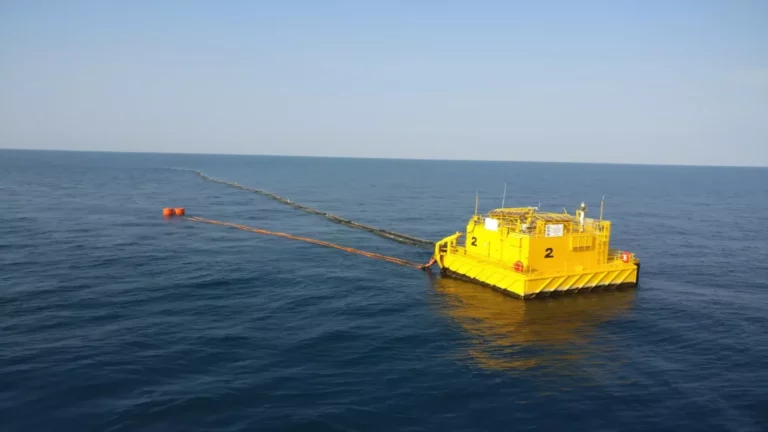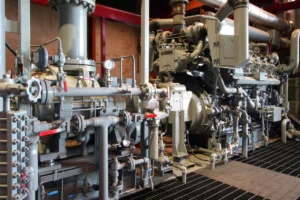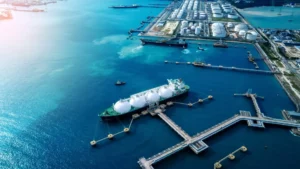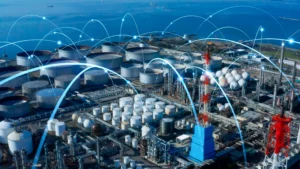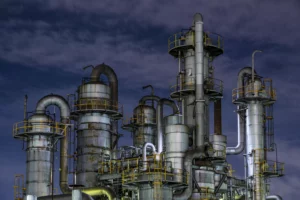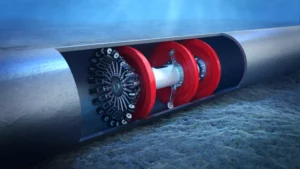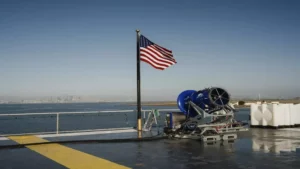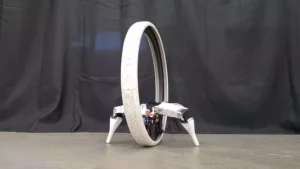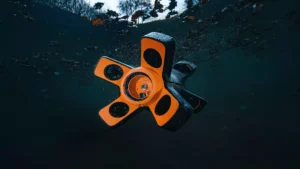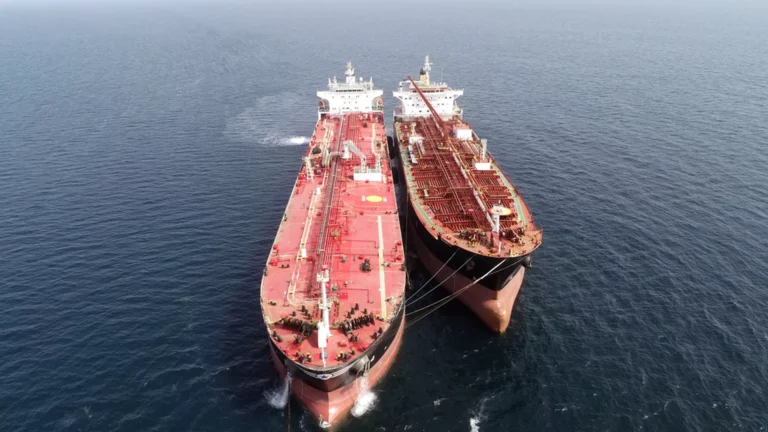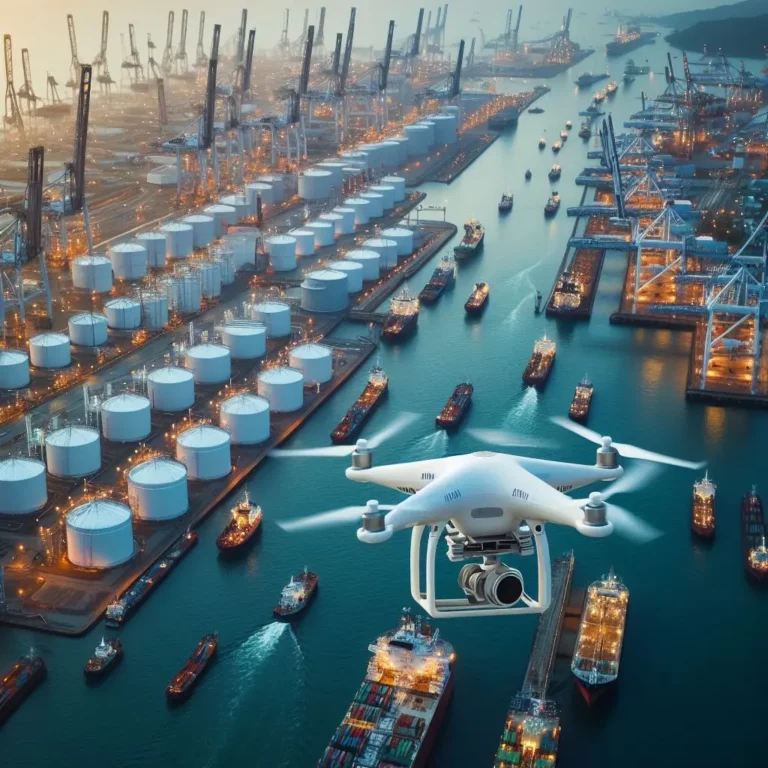Introduction
Monobuoy failure analysis a crucial tool for identifying, assessing, and mitigating risks. Through a systematic and rigorous approach, professionals can determine the causes of failures, predict their likelihood of occurrence, and develop strategies to prevent or minimize their consequences.
Failure analysis of monobuoys are imposing floating structures that serve as mooring points for ships and oil platforms, representing a vital solution for handling liquid cargoes between vessels and terminals, and they are significant elements in the maritime industry. However, like any complex system, Monobuoy failure analysis are exposed to a variety of failures that can jeopardize the safety of operations, the environment, and the profitability of companies.
This article addresses the failure analysis of Monobuoy failure analysis exploring the interrelation between key components such as safety and operational efficiency of these systems. Fundamental aspects such as: structural integrity, monobuoy failure analysis inspection, risk assessment, and maintenance plans are discussed. The importance of these analyses, applicable regulations, derived benefits, and practical examples of their application are highlighted. The following details each of these critical aspects.
Structural integrity
It refers to the ability of a monobuoy to withstand the loads and stresses to which it is subjected during normal operation and in extreme situations such as storms or adverse conditions. Structural integrity analysis is an examination of the construction materials, structural design, and resistance to wear and corrosion. Identifying potential structural weaknesses can help prevent catastrophic failures that could lead to oil spills or even loss of life.
Monobuoy inspection
Single point mooring inspections are periodic assessments conducted to ensure that all components of the single point mooring function properly. These inspections can be visual, acoustic (using sound sensors to detect internal anomalies), or even conducted using remotely operated vehicles for underwater inspections. These inspections are crucial for identifying issues before they escalate into serious failures.
Below is the following video, courtesy of Serport S.A, which showcases single point mooring inspections with ROV.

Monobuoy inspection with ROV.
Risk assessment
In the context of monobuoy, this involves identifying potential failure scenarios and their consequences for operations, safety, and the environment. This includes analyzing the likelihood of failure and the impact it could have. Based on this assessment, preventive and mitigation measures are designed to reduce the probability of failures and minimize their effects.
Maintenance plans
Maintenance plans for monobuoy are detailed schemes that establish how and when maintenance activities should be carried out to keep these systems in optimal operating conditions. These plans are based on inspection findings and risk assessments, and typically include routines for inspection, part replacement, cleaning, and system updates. A good maintenance plan ensures safe and efficient operation, extending the infrastructure’s lifespan and reducing long-term costs.
The importance of failure analysis
Failure analyses are essential for identifying and preventing incidents that could compromise the structural and functional integrity of these systems. By understanding the root causes of failures, companies implement effective corrective and preventive measures, minimizing risks and optimizing operational performance.
The promotion and implementation of failure analysis practices in monobuoy is a shared responsibility among various stakeholders:
- Single buoy operators: They must take a proactive role in implementing rigorous failure analysis programs and providing appropriate training for their personnel.
- Regulators: They should establish standards and regulations that encourage the adoption and proper use of failure analysis.
- Industry organizations: They should promote the exchange of knowledge, best practices, and resources related to this methodology.
What role does monobuoy failure analysis?
Failure analyses in single buoy systems serve a fundamental function in managing structural integrity and operational safety. These studies allow for:
- Identifying potential failures: Critical components of the single buoy, such as structures, moorings, loading and unloading systems, and control equipment, are examined to detect possible weaknesses or vulnerabilities.
- Assessing the severity of failures: The severity of potential failures is determined based on their impact on safety, the environment, and production.
- Corrective actions: Priorities are established for repairing, replacing, or improving critical components, ensuring that resources are allocated efficiently.
- Developing preventive maintenance plans: Specific maintenance plans are designed for each single buoy, considering its failure history, environmental conditions, and operational loads.
- Compliance with standards and regulations: Compliance with international maritime safety standards, such as those established by the International Maritime Organization (IMO) and relevant societies, must be ensured.
Regulations governing failure analysis of monobuoys
Failure analysis in single buoy systems is governed by various international regulations that ensure safety, efficiency, and environmental protection. Below is a summary of the main regulations and international bodies involved:
- International Maritime Organization (IMO):
Establishes general guidelines for the safe construction and operation of maritime facilities and associated equipment, including single buoy systems.
Documents such as the International Code for the Construction and Equipment of Ships Carrying Liquefied Gases in Bulk (IGC Code) may be applicable depending on the handled products.
- Classification societies:
Entities like the American Bureau of Shipping (ABS), Lloyd’s Register, and DNV GL provide specific standards and certifications for single buoy systems. These include requirements for design, maintenance, and operation.
For example, ABS standards for mooring and docking systems specify strength and durability standards.
- American Petroleum Institute (API):
API sets technical specifications and relevant safety standards, such as API Spec 17F, which pertains to subsea control systems for production operations.
API RP 2SK provides recommendations for the design and maintenance of ship mooring systems, critical in single buoy operations.
- International financial reporting standards (IFRS):
While not directly technical, IFRS standards can influence how companies report depreciation and equipment maintenance like single buoy systems, impacting how failures are managed and prevented.
- Environmental regulations:
International regulations such as those of the MARPOL Convention, focusing on preventing marine pollution, require systems like single buoy systems to meet strict standards to prevent oil spills.
- Other standards:
Failure analyses are governed by other international standards such as those established by the Society of Petroleum Engineers (SPE) and the International Organization for Standardization (ISO). These standards dictate single buoy inspection protocols and criteria for risk assessment, ensuring maintenance and operational practices meet global safety and efficiency standards.
There are no specific standards dedicated to failure analysis in single buoy systems. Integrating knowledge from SPE and various international regulations contributes to ensuring safe and efficient practices in their operation and maintenance.
To ensure accuracy, it is recommended to directly consult specific regulations applicable to each situation. However, the core objectives of these regulations focus on: Identifying potential failures and assessing their severity.
- Developing preventive and corrective maintenance plans.
- Implementing control measures to prevent or mitigate failures.
- Documenting failure analyses and implemented actions.
Benefits of analysis
The implementation of failure analysis in single buoy systems offers a range of tangible benefits for the companies and organizations involved:
- Enhances safety: Reduces the risk of accidents and oil spills, safeguarding human life, the environment, and assets.
- Increases reliability: Minimizes unplanned shutdowns and extends the lifespan of the single buoy, enhancing operational efficiency.
- Optimizes maintenance costs: Allows focusing resources on critical areas, reducing unnecessary expenses.
- Facilitates regulatory compliance: Demonstrates commitment to safety and risk management, avoiding penalties and enhancing reputation.
- Promotes a safety culture: Encourages data-driven decision-making and individual responsibility in failure prevention.
Practical application and benefits
A practical case illustrating the benefits of these analyses can be seen in a single buoy system operated by a renowned oil firm. Following a thorough risk assessment and buoy inspection, premature wear in critical components was detected. Early failure analysis allowed adjustments to be made in buoy maintenance plans, significantly extending the system’s lifespan and avoiding costly unplanned shutdowns.
Recent studies indicate that proper maintenance implementation in these systems, based on rigorous failure analysis, can reduce downtime by up to 25%, representing a substantial decrease in operational costs and enhancing operational safety.
Practical examples
- Fatigue analysis: The resistance of the buoy’s metallic components to cyclic loads from waves and wind is assessed to prevent breakages and collapses.
- Corrosion analysis: The susceptibility of materials to marine corrosion is examined, establishing protective measures and maintenance to extend lifespan.
- Seismic risk analysis: The buoy’s vulnerability to earthquakes is evaluated, considering its location and design characteristics, and developing emergency response plans.
- Impact analysis: The potential impact of the buoy with other vessels or structures is assessed, implementing appropriate separation measures and signaling.
Global perspective
With a global perspective, this approach not only benefits individual operators, but also establishes a standard of operation and safety that supports the industry as a whole. Organisations such as SLOM (Latin American Society of Petroleum Marine Terminal Operators and Monobuoy Failure Analysis Operators) are promoting these practices to strengthen the industry worldwide.
Conclusions
A failure analysis of SPMs is more than just a corrective measure; it’s a proactive strategy applied to ensure the integrity and efficiency of critical maritime operations. Companies adopting this approach not only optimize their operations but also reinforce safety and reliability in a sector where the margin for error is minimal.
Through a systematic and rigorous approach, professionals can identify, assess, and mitigate risks associated with these critical structures, ensuring a safer, more reliable, and sustainable maritime sector.
Secure your operation! Explore the monobuoy analysis today.
References
- Fracttal.com: “Failure Analysis in Maintenance: What It Is and How to Implement It”: https://www.fracttal.com/es/blog/analisis-de-fallos-en-mantenimiento.
- Academia.edu: https://www.academia.edu/ “OPERATION AND MAINTENANCE PRINCIPLES OF MONOBUOY FAILURE ANALYSIS STRUCTURES” by Milangelli Paz.



